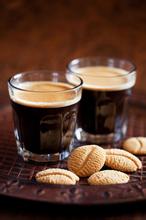Special taste of Mexican boutique coffee beans taste the characteristics of the manor area of Aldu Mara
Implement a presidential republic. The President is the head of State or Government for a term of six years and is not eligible for re-election. There is no vice presidential post. The government is divided into three parts: economy, security and justice, and human development, which is composed of 18 ministries and 17 ministerial units.
The first bourgeois constitution was promulgated in 1824 after independence. On February 5, 1917, the Constitution of the United Mexican States (that is, the Mexican Constitution of 1917) was promulgated to strengthen the power of the state and the government. The Constitution entered into force on May 1 of the same year and has been in force ever since. Nearly 200 modifications have been made during this period. According to the Constitution, the state is a presidential federal republic, modelled on the separation of legislative, executive and judicial powers in the United States; the president is elected by direct universal suffrage for a term of six years and cannot be re-elected for life. The president is the head of state and government and holds the highest executive power of the country. The Federal Parliament, composed of the Senate and House of Representatives, is the national legislature, with the main functions and powers of ratifying treaties and appointing senior officials of the court, finance, diplomacy and the military; amending the Constitution; approving presidential visits; and appointing interim presidents if necessary. The 128 members of the Senate are composed of four from each of the 31 states and the Federal District for a term of six years. Of the 500 members of the House of Representatives, 300 are elected by majority votes and 200 are elected according to the proportional representation of political parties for a term of three years. The Cabinet is the executive branch of the government, directly under the leadership of the President. The Mexican states formulate their own constitutions, but the power of the state government is bound by the national fundamental law. In December 1991, the Parliament adopted an amendment to the Constitution, announcing the suspension of the land reform implemented since the entry into force of the Constitution and the privatization of village land; and recognized that the church enjoyed the status of a citizen body as a legal person. [1]
Constitution
The first constitution after independence was promulgated in 1824. The Constitution of the United States of Mexico (that is, the Mexican Constitution of 1917) was promulgated on February 5, 1917 and implemented until now, which has been amended many times. The Constitution provides for the separation of legislative, executive and judicial powers; the President shall be elected by direct universal suffrage for a term of six years and shall not serve for life; the land, waters and all other natural resources shall be owned by the state; and workers have the right to organize trade unions, strike, and so on. The federal states make their own constitutions, but the power of the state government is bound by the national constitution. [1]
Parliament
The Federal Parliament is divided into the Senate and the House of Representatives, exercising legislative power. Members of both houses of Congress shall not be re-elected, but they may run for another term. The main functions and powers include: ratifying treaties and the appointment of senior judicial, financial, diplomatic and military officials by the President; amending the Constitution; approving the President's visit; and appointing an interim President if necessary. Both chambers have "leadership committees" and "political coordination committees". Members of both houses of Congress shall not be re-elected, but they may run for another term. The current parliament was formed on September 1, 2012.
High quality beans: Aldu Mara, Mexico. Taste characteristics: large particles, with a strong sweet, sour taste and good aroma. The best barbecue degree: medium fried or body fried. It is characterized by a smooth taste, high acidity, medium mellowness and a slightly nutty finish. Sweet, sour and bitter are neutral, moderately sour, special and elegant. Although the professionalism of Brazilian coffee is of little value, it is very suitable for blending. Because of the huge output of coffee, the price is not very expensive.
Edit the characteristics of Mexican coffee in this paragraph
Mexicans are enthusiastic and optimistic, and the chocolates in Mexican coffee perfectly reflect this. There are different methods of Mexican coffee, but the main difference is whether it contains alcohol or not. let's first introduce the practice of non-alcohol. Heat a cup of milk, a teaspoon of cinnamon powder and a teaspoon of vanilla powder in a pot. Keep it at medium temperature. The heat is not too high. The milk must not boil. Then add the cocoa powder, fully dissolve and stir well. If you are particularly fond of chocolate, you can use chocolate paste instead of cocoa powder and milk. Let the milk dry for about 5 minutes, wait until the milk is slightly cool, then pour into the prepared coffee, decorate the coffee surface with cold cream, then decorate with a piece of cinnamon, and the Mexican coffee is ready. The aromas of chocolate and cinnamon blend together to give off the smell of desert. Tasting such a cup of coffee, you seem to be walking through the gray-green cactus in the Mexican desert. The most famous alcoholic drink in Mexico is tequila (Tequila). When Mexicans drink tequila, they lick a little salt on the tip of their tongue and then swallow the wine in a small glass. Tequila is a strong wine, the Mexican coffee made by adding this wine is very good, if you have enough courage, you might as well give it a try. Tequila Mexican coffee and non-alcoholic Mexican coffee is basically true, but first pour a small cup of tequila at the bottom of the cup, and then pour in milk and coffee, preferably decorated with cream and cinnamon

Important Notice :
前街咖啡 FrontStreet Coffee has moved to new addredd:
FrontStreet Coffee Address: 315,Donghua East Road,GuangZhou
Tel:020 38364473
- Prev

Fresh and elegant Dominica Santo Domingo Coffee Flavor taste Manor characteristics of boutique coffee
In 1795, France and Spain signed the Basel Peace Treaty in Switzerland, agreeing to cede the Santo Domingo area in the eastern part of the island of Dominica to France, making the Spanish island a complete French colony. Six years later, Toussaint Lovidur, a black Haitian, led other black slaves to revolt against French rule and captured Santo Domingo in 1801.
- Next

Panamanian Kasha boutique coffee bean flavor and taste the characteristics of the manor area introduce the varieties of Panamanian coffee
The Panamanian isthmus was originally inhabited by Indian settlements such as Chibucha and the Caribbean. In 1501, Panama was colonized by Spain and belonged to the Governor of New Granada. [5] in 1821, Panama became independent and became part of the Republic of Greater Columbia. [5] in 1830, after the dissolution of the Republic of Great Columbia, it became a member of the Republic of New Granada (later known as Colombia).
Related
- Detailed explanation of Jadeite planting Land in Panamanian Jadeite Manor introduction to the grading system of Jadeite competitive bidding, Red bid, Green bid and Rose Summer
- Story of Coffee planting in Brenka region of Costa Rica Stonehenge Manor anaerobic heavy honey treatment of flavor mouth
- What's on the barrel of Blue Mountain Coffee beans?
- Can American coffee also pull flowers? How to use hot American style to pull out a good-looking pattern?
- Can you make a cold extract with coffee beans? What is the right proportion for cold-extracted coffee formula?
- Indonesian PWN Gold Mandrine Coffee Origin Features Flavor How to Chong? Mandolin coffee is American.
- A brief introduction to the flavor characteristics of Brazilian yellow bourbon coffee beans
- What is the effect of different water quality on the flavor of cold-extracted coffee? What kind of water is best for brewing coffee?
- Why do you think of Rose Summer whenever you mention Panamanian coffee?
- Introduction to the characteristics of authentic blue mountain coffee bean producing areas? What is the CIB Coffee Authority in Jamaica?

